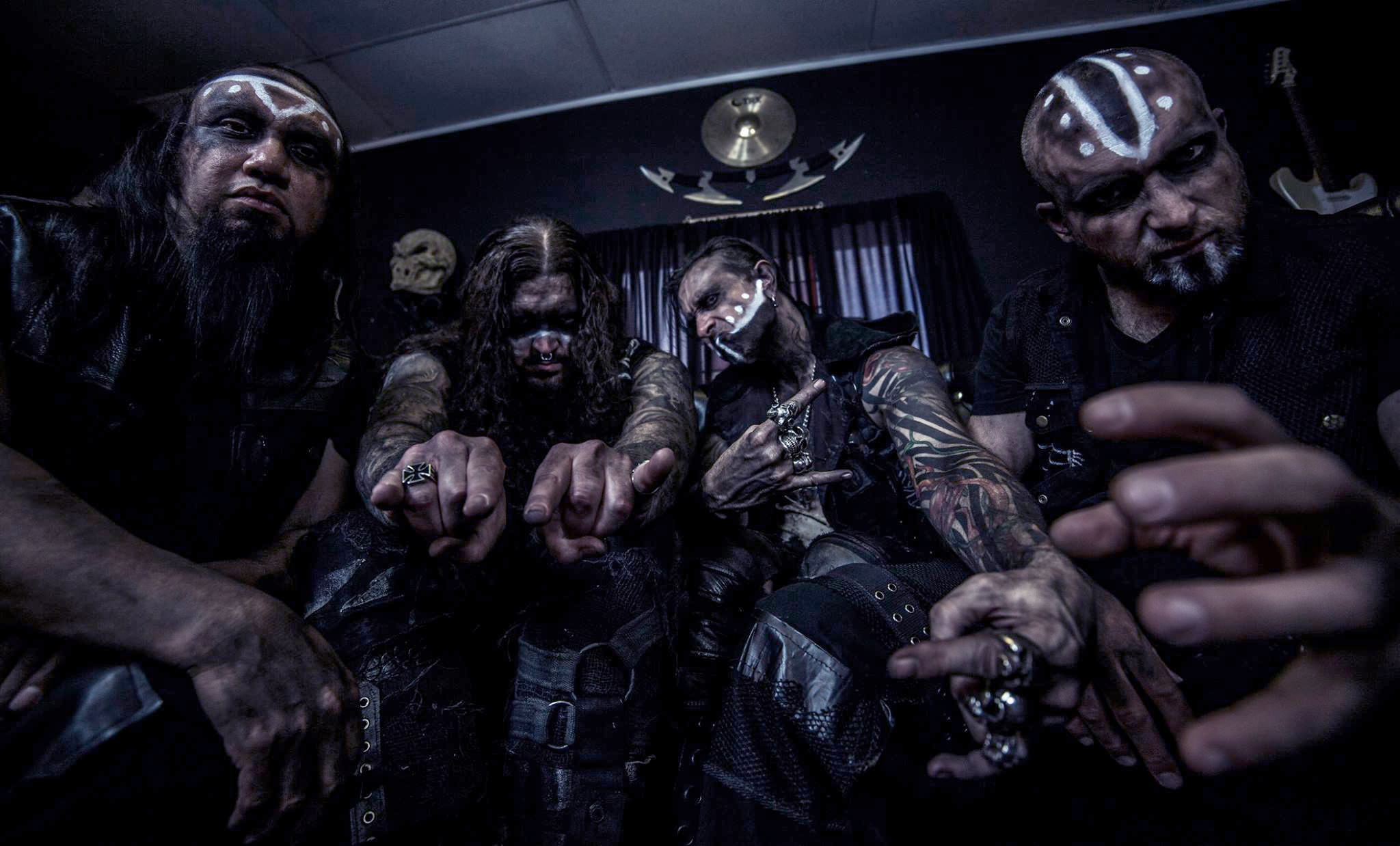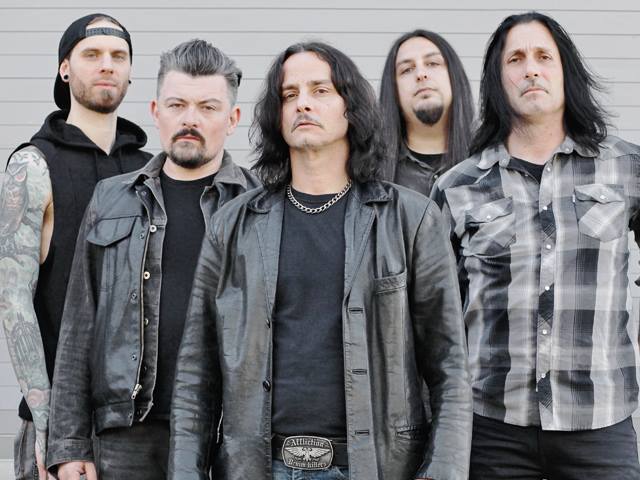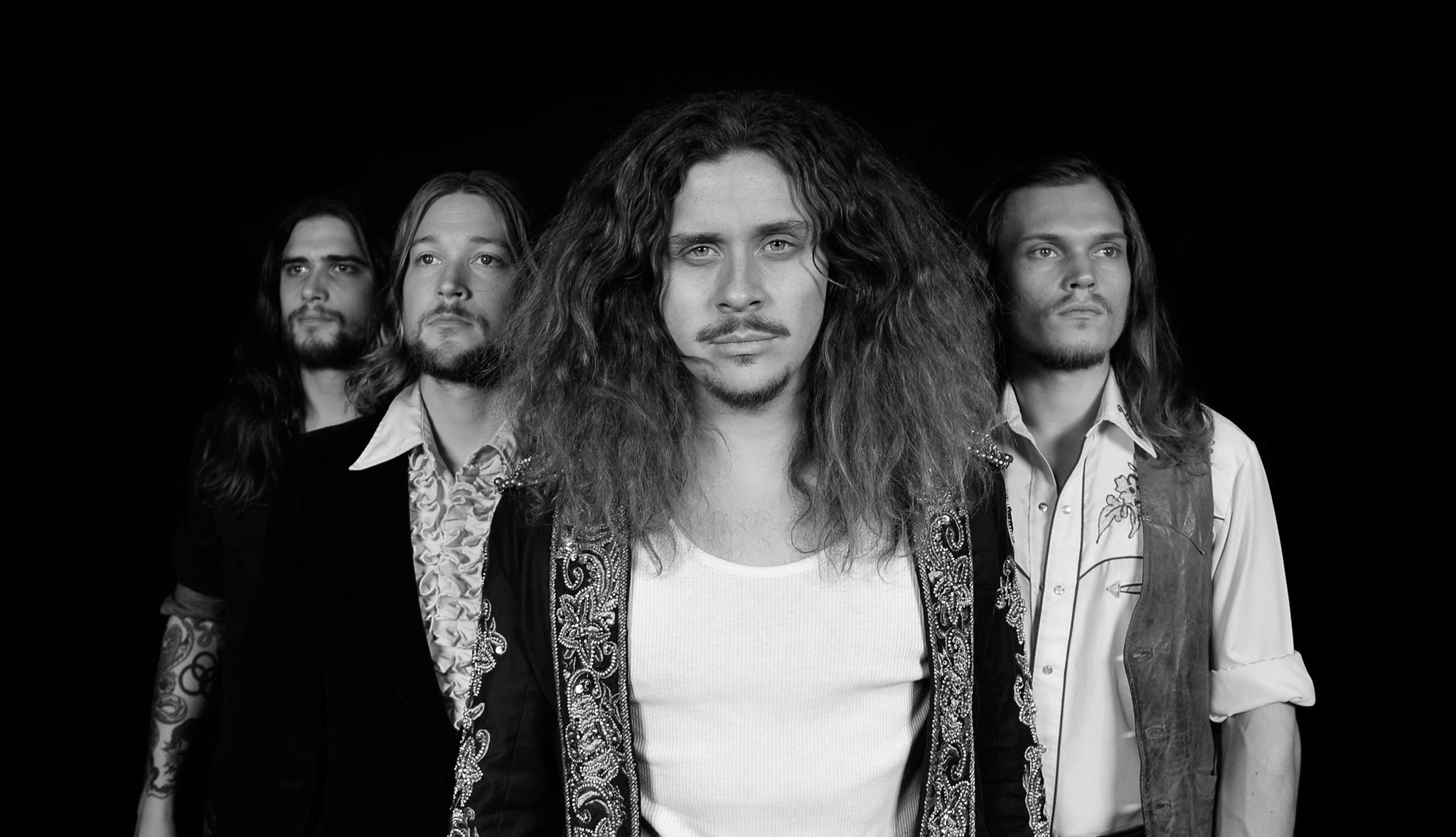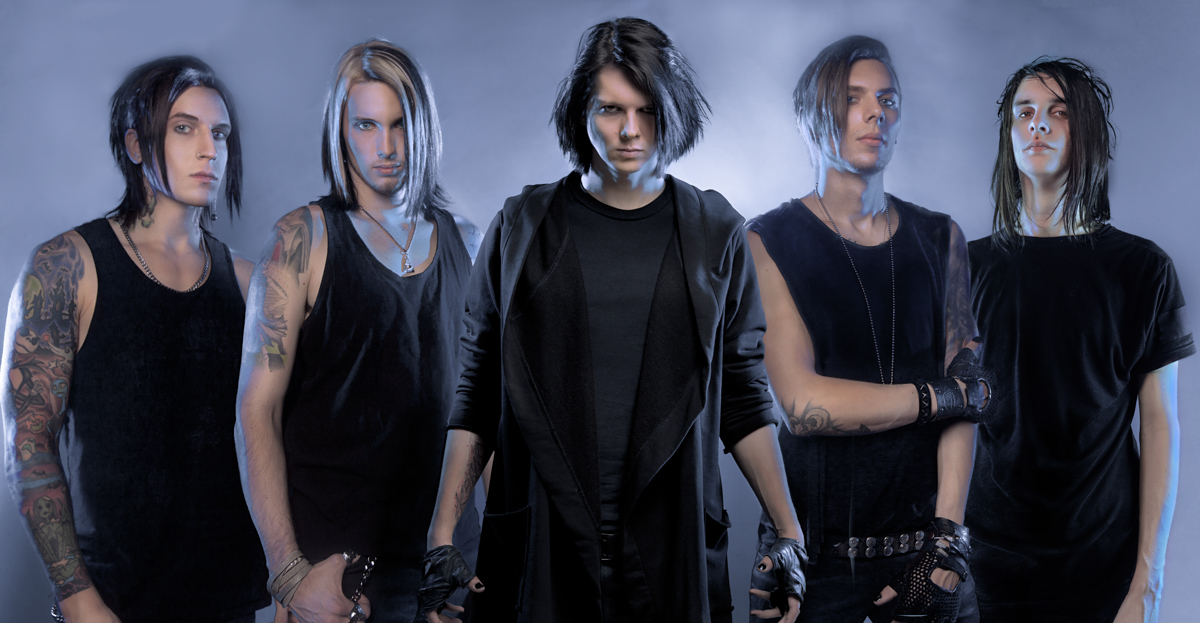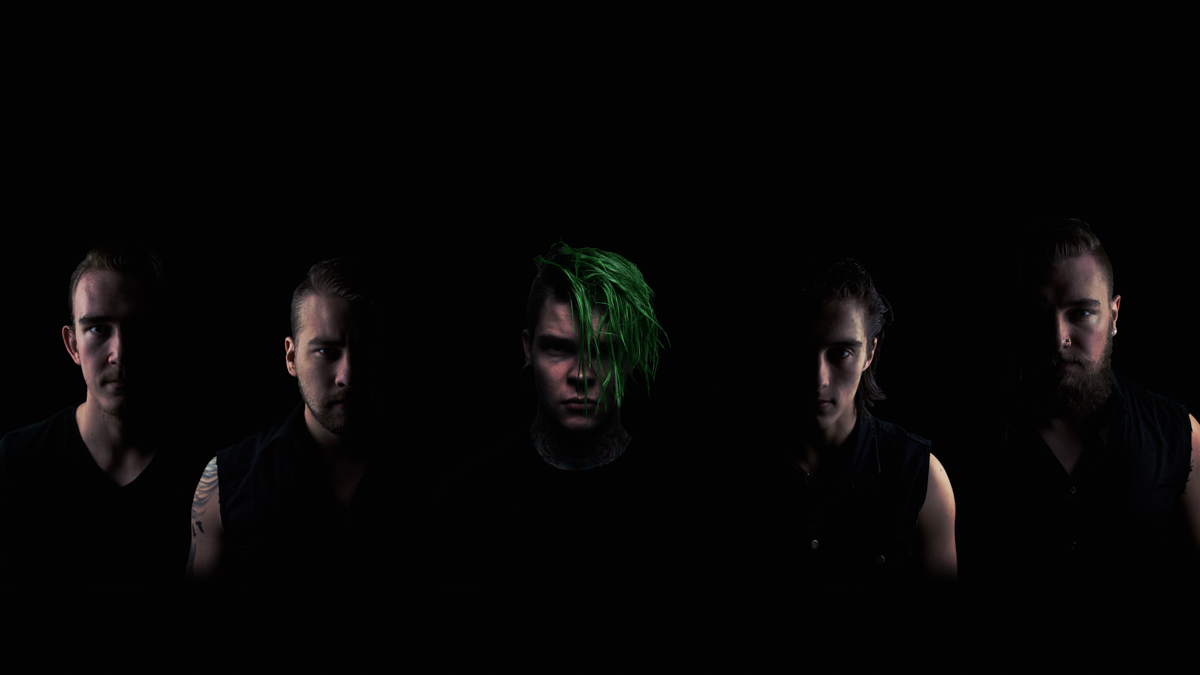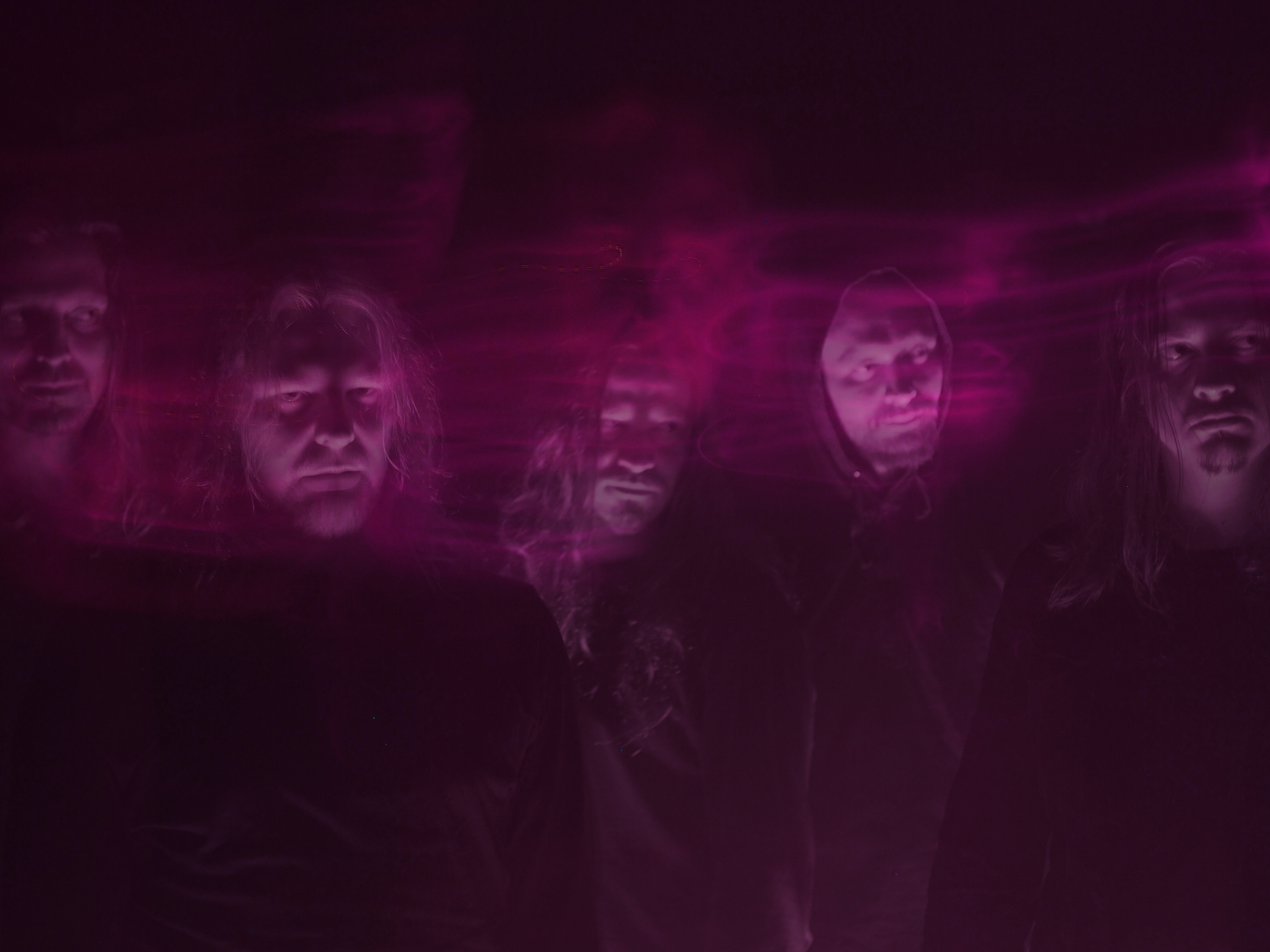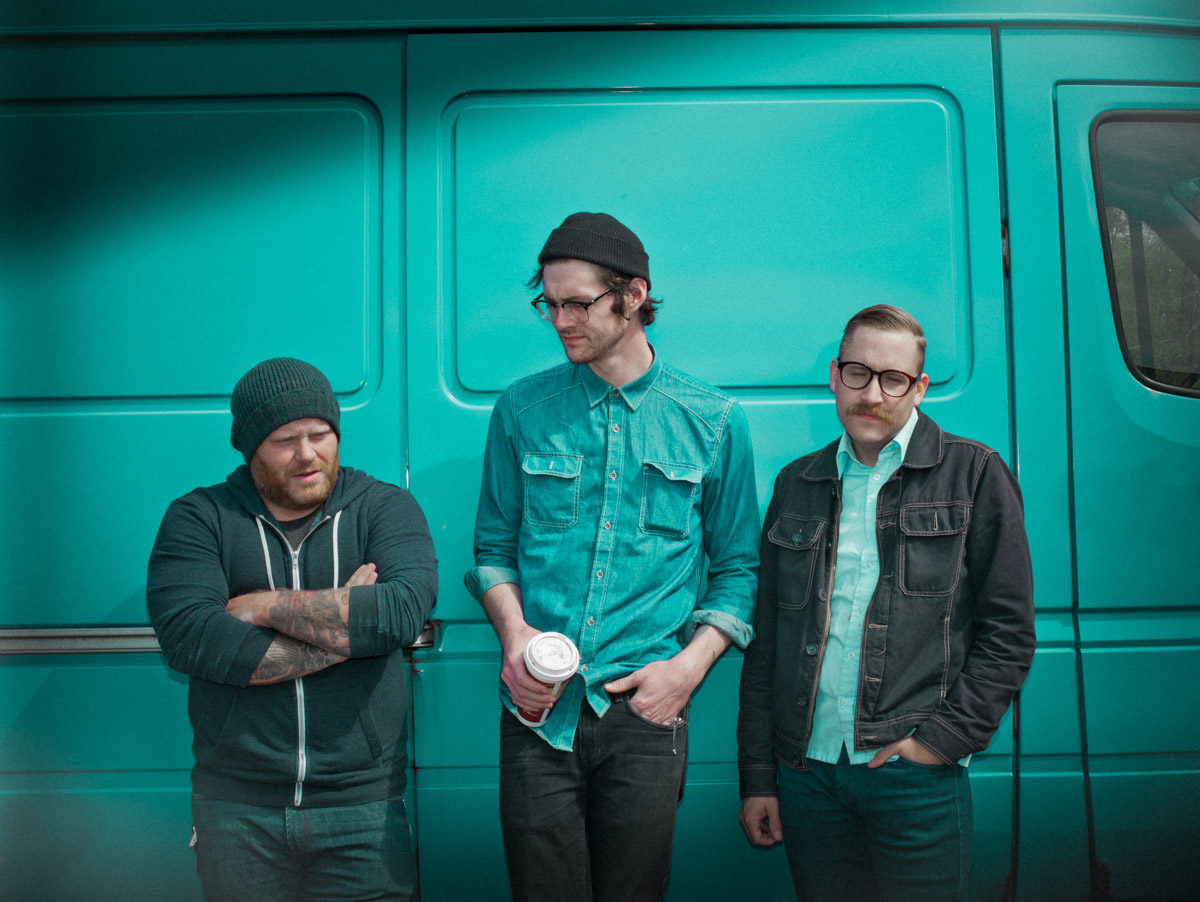The formation of Witch Casket began in 2013 when ex-Sothis guitarist Colin “Nylock” Cameron and guitarist Neal Tiemann started working on writing songs together in Nylock’s Los Angeles studio. Once a majority of the songs had been written, ex-Sothis vocalist Adam “Drogoth” McCarthy was brought on to handle writing lyrics and recording vocals. Originally formed simply as a studio project, all musical instrumentation was composed and executed by both Nylock and Tiemann. The album in its entirety was also produced, engineered, and mixed by Nylock himself in his personal Hollywood studio, and mastered by Maor Appelbaum. The album was completed with this lineup, however, towards the end of the recording process, Tiemann departed the project to focus on writing for and touring with established SoCal metal band “Devildriver”. As completion of the band’s debut album “Hatred Index” approached, live rehearsals were started with the addition of ex-Sothis guitarist Robert “Scathe” Enriquez, bassist Aramis Arredondo, and drummer Kaspars Lucey-Grinbergs. With the debut album recorded and the formation of the live band complete, Witch Casket are poised to explode on the metal scene with a crushing brutality, a high-energy live show, and are ready to deliver to the masses their unique brand of Melodic Blackened Death Metal.
ANTIHERO: What was the writing process for Hatred Index like?
NYLOCK: It was done over the course of a few years. Generally, I’ll start a songwriting process and chip away at it until I like it or feel ready to bring in other band members. Neal seems to work in a similar way. We worked on our own Ideas, then once we had taken them as far as we could we worked together to finish them. Each song always comes about in a different way. Sometimes I will focus on one song at a time, but usually, I am working on multiple songs at a time.
ANTIHERO: To extend the previous question, how much of the album was in your head before entering the studio? Can you elaborate on your methods for rehearsal?
NYLOCK: I don’t know how much of it was in my head. I had a set of concepts, but each song takes its own path in development. The way I work is a far cry from a traditional old school band. I do all most all our audio work in my home studio. So, there is no work before the studio. It is born in the studio. We just plug in and start tracking things. That’s how I compose. I write and record all the instrument parts. Then I pass it off to Adam to do the vocal work. Then we finalize that songs recording. At this point, the song has never even been rehearsed. From here, the other members learn their respective parts. Each member is expected to put in the diligence to have that song down like the recording before we step into a rehearsal room.
ANTIHERO: Would I be correct in my assumption that the album was written for the pit?
NYLOCK: Ha-ha, I guess you could say that. We just try to focus on just making a great Metal song. But there were several sections of songs that we extended certain parts for “just in case of pit”.
ANTIHERO: The band has the ability to put everything into certain parts such as the end of “That Damn Devil” or even the beginning of the title track. Was that a conscious effort to just let it all out?
NYLOCK: Yes, you could frame it that way. We try to do what we feel serves the song in the most impactful way. If that means going big for the right moments, then we do. If I feel like a particular song needs to be huge and symphonic the whole song, then I would do that as well.
ANTIHERO: The guitar tracks are so thick and diverse. How many tracks did you use per song?
NYLOCK: Thank you. The answer to that somewhat depends on the song. Now we’re getting into trade secrets ha-ha. In my process, I think of the guitars sectionally, kind of like a string section. It’s very common in our music for Rhythm Guitar 1 to have a completely different harmonic extension of a riff than Rhythm Guitar 2. So, 2 different guitar riffs that combine to create what is then perceived as the main “Riff”. Typically, there a 4 Rhythm Guitar tracks full time. I do 2 takes of each, Guitar 1 and Guitar 2, on an A amp then a B amp.
ANTIHERO: When writing, do you first have a rhythmic or melodic idea?
NYLOCK: It is always a little different each riff, each song, but it is very common for me to hear everything at once. At least riff by riff. Occasionally I will just start with a lead or rhythm.
ANTIHERO: Do you ever hear a song completed in your head before writing it?
NYLOCK: Sometimes. Hearing every part of a song front to back, is rare though. I usually think riff by riff.
ANTIHERO: Are guitar solos integral to the framing of a song or are they more of an after-thought?
NYLOCK: Again, It’s always different. I have written entire songs just to showcase a cool solo I came up with. I have also finished a complete song, and then asked,” Damn, where do I put solos? Does it even need solos?”
ANTIHERO: What type of guitar rig/bass rig do you all use (Instrument & Amp)?
NYLOCK: I like my Fryette Pittbull Ultra 120. Joey uses a Pittbull as well, and Aramis likes Mark Bass. I use mostly Jackson Custom shop guitars. And Ibanez basses.
ANTIHERO: What advice would you give to other musicians in terms of approaching the writing and recording of an album?
NYLOCK: I would say this. Take everything you have learned. Take everything you have been taught and every piece of advice you have received from those you look up to. Now throw it over the cliff like Luke Skywalker. You have to find your own workflow. You have to find your sound. It is easier to do that once you clear your mind and discard the baggage of everyone else’s bullshit floating around your head.
ANTIHERO: What is the theme behind “The True Knot”? (ANSWER BY VOCALIST DROGOTH)
DROGOTH: The lyrical content is loosely based off of the Stephen King book “Dr. Sleep”. The story is about a band of traveling gypsy type characters that turn out to be both immortal and of a type of “psychic vampire” ilk. They basically find children that have psychic abilities, and then slowly torture and kill them, and the pain and suffering that the kid endures are what they feed off of. It allows them to continue to be immortal, and without doing it, they will die. In the book, they call themselves “The True Knot”. It’s also a sequel to King’s previous story “The Shining”. Dr. Sleep continues the story of Danny Torrance, who is now grown up and eventually has to confront “The True Knot”.
ANTIHERO: The band has a diverse sound. What four bands would you consider to be the frame for Witch Casket?
NYLOCK: Aghh. That’s loaded ha-ha. In all honesty, I don’t think that I would consider any other bands to be the “Framework” for WC. Maybe our last band Sothis. I look at what I do now as a bit of a continuation of my work then. I really do try to isolate myself from what is going on in the world of metal. I feel that a lack of external influence can help preserve my own musical Identity. I am not saying that I don’t listen to and love other bands. I don’t want to stagnate. But I purposely limit my exposure to a reasonable level. We have all had that experience of being so into an album that it effects and bleeds into every aspect of our lives. I try to avoid that. If anything, the listeners themselves may have better insight into this question than I. But when I am forced to explain us, genre-wise, to someone who hasn’t heard us, I’ll say something to this effect. “It’s like a combination of Amon Amarth, Arch Enemy, Emperor, Old Man’s Child and Death with a touch of old-school Testament and Megadeth.
ANTIHERO: There seems to be a 1990s element to the band’s sound. What do bands like Sepultura, Morbid Angel, and Strapping Young Lad mean to you and your sound?
NYLOCK: No surprise there, I was a 90’s teenage metalhead. Ha-ha. I am just a byproduct of my era I guess.
ANTIHERO: Your material does not sound like most of the other bands out there who cling tightly to their specific genre/subgenre. Is there a certain audience that you play to, or would you just say you play Metal?
NYLOCK: Exactly! We play Metal. I used to focus on Black Metal. Death Metal before that, and Thrash before that. Prog Metal and Neo-Classical in college. After my experience with Sothis, and the “Black Metal scene”. The whole genre vs sub-genre vs cultural tribalism thing just started to piss me off, more and more year after year. Eventually, I came to realize that for me, Genre was an obstacle, a shackle, a prison for a creative mind. A construct that needed to be torn down. I am not sure if there is a specific audience that we play to, but I know that if there is, in time they will tell us.
ANTIHERO: The last minute of “The True Knot” is intense, almost cinematic. What were your thoughts when writing?
NYLOCK: Ah yes. I wanted that section to be EPIC AS F@#K. Heraldry on display, battle horns blaring, war drums pounding, Dragon slaying heroics F@#ing EPIC. Metal as F@#k Epic. I wanted strings, choirs, altos, sopranos, bells, percussion, I wanted it all. I wanted orchestral metal on a large scale to deliver maximum effect. So that’s what I tried to do. As we were working that section, Neal came up with this sick epic Major with a Minor 6 moving arpeggio style lick that was the perfect finishing touch. I even had one of the violin sections harmonize it. It was just 2 guys trying to be epic and set our vocalist up for success. I look at a large part of our job as songwriters to in fact be, setting the vocalist up for success. Fortunately for us, Adam delivers.
ANTIHERO: What band or artist that you consider a guilty pleasure helped craft the band’s sound?
NYLOCK: I by no means have a guilty pleasure, as I generally just don’t believe in the concept. But I feel that there are several bands, producers, and instrumentalists that are clearly influential to my style personally as a guitarist. Here is a short list. King Diamond, and Andy La Roque. Testament and Alex Skolnick. Megadeth in the Marty Friedman era and Death, everyone in it ever. I could go on but that is enough for now.

